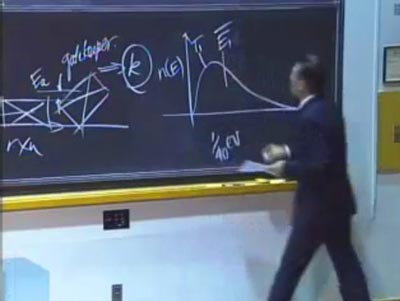‘The secret of a happy marriage remains a secret.’ –Henry Youngman
Mathematical models and computer simulations usually begin as aids to understanding, introduced when some aspect of natural science proves too knotty for direct analysis. (…) Then the model itself becomes an object of scientific inquiry—a puzzle to be solved.
A good example is the Ising model in solid-state physics, which attempts to explain the nature of magnetism in materials such as iron. (…) One step up from the Ising model—in terms of realism and complexity—is something called the Hubbard model. (…)
Except in the special case of a one-dimensional lattice, the Hubbard model has defied exact mathematical analysis. And computer simulations of Hubbard systems become painfully slow with any more than a few dozen electrons. Calculations are so difficult that no one knows for sure whether various Hubbard systems are conductive or insulating, or what their magnetic properties might be. This situation has led to an extraordinary new strategy for solving the model: putting it to the test of experiment.



